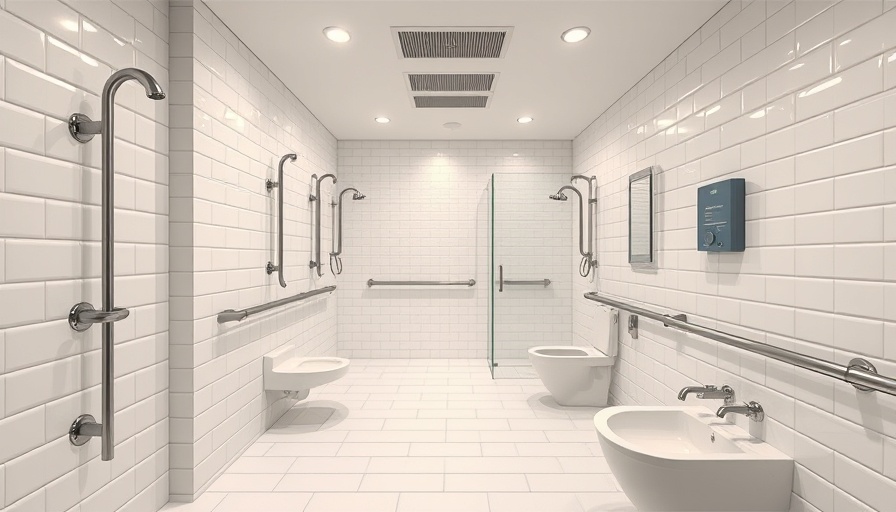
Understanding Accessibility in New Jersey Homes
As inclusivity and accessibility take center stage in our communities, the importance of understanding New Jersey State Laws on Accessible Bathrooms cannot be overstated. For homeowners, this knowledge is not just beneficial for legal compliance but crucial for creating an inviting living space for everyone, including individuals with disabilities. In New Jersey, the commitment to accessibility is reflected in both state regulations and federal standards, particularly the Americans with Disabilities Act (ADA). This article uncovers the principles, responsibilities, and design strategies homeowners should consider when embarking on bathroom renovations.
The Framework of Accessible Bathroom Laws
New Jersey’s accessibility laws primarily stem from the ADA but are tailored with state-specific regulations to address residential needs. While a private residence isn’t held to the same stringent standards as commercial facilities, there's a significant push towards accommodating those who require accessible spaces. Homeowners are expected to consider the New Jersey Barrier Free Subcode in their renovations, providing guidelines to create functional and compliant bathrooms. Harnessing this knowledge empowers homeowners to navigate their renovation projects with confidence.
Essentials for Accessible Bathroom Design
Creating an accessible bathroom involves thoughtful planning and execution. For starters, spaciousness is key; the bathroom design must allow for wheelchair maneuverability with a minimum door width of 32 inches. Additionally, the placement of essential fixtures plays a crucial role in usability. For instance, toilets should not only be reachable but also at a height that supports easy transfers from a wheelchair. Installing grab bars next to toilets and in the shower area ensures that stability and support are available when needed. These considerations not only align with legal mandates but also transform everyday tasks into manageable activities for users.
Legal Responsibilities for Homeowners
Homeowners have a legal and moral responsibility to ensure their properties adhere to accessibility standards. While these responsibilities have traditionally pertained more to public venues, the emphasis on private residences has grown significantly, especially as more homeowners undertake renovations. Non-compliance can lead to potential legal consequences if an individual’s accessibility needs are not met appropriately. When working with contractors, clear communication about the intention to incorporate accessibility features is essential. A contractor knowledgeable in New Jersey regulations can help implement these features effectively.
The Importance of Non-Slip Flooring and Low Thresholds
In any accessible bathroom design, safety measures are paramount. Choosing non-slip flooring is crucial for preventing accidents, particularly for individuals who may struggle with balance. Moreover, implementing lower thresholds allows for easier navigation into the bathroom, eliminating potential hazards for wheelchair users or individuals with mobility challenges. These features exemplify how compliance with guidelines translates to enhanced safety and comfort in daily use.
Tailoring Your Home to Diverse Needs: A Valuable Investment
Investing time and resources into making your bathroom accessible is not just about following laws; it’s about appreciate the diversity of visitors and house members. By fostering an environment that’s welcoming and functional, you support individuals with disabilities, making them feel valued in your space. Not only does this enhance quality of life for everyone in the home, but it can also increase the property’s market value. Accessibility can have positive implications for real estate, making homes more desirable in a competitive market.
Conclusion: Embracing Responsibility and Inclusivity
Understanding New Jersey's accessibility laws is more than a compliance exercise; it’s a step towards a more inclusive community. As homeowners modify their spaces to meet these standards, they contribute to a culture of acceptance and understanding. Remember, every adjustment you make not only reflects legal compliance but also demonstrates care for the quality of life of those you share your home with. For anyone embarking on this journey, it’s vital to stay informed and proactive. By bridging the gap between regulations and home modifications, you ensure both compliance and compassion coexist within your home.
Ready to make your bathroom more accessible? Explore renovation options that align with both New Jersey regulations and your commitment to inclusivity today!
 Add Row
Add Row  Add
Add 




 Add Row
Add Row  Add
Add 

Write A Comment